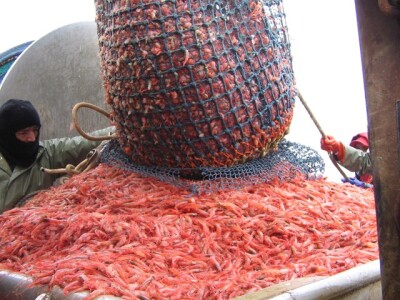The other Chesapeake blues
The Mid-Atlantic’s blue catfish invasion results in a prolific fishery and a burgeoning market
By Jay Fleming
“They are a good fish, but in the wrong place,” says fourth-generation waterman Billy Rice of the blue catfish. Rice grew up fishing on the Potomac River when blue catfish were nonexistent; now they take up an estimated 70 percent of the biomass in certain spans of the river.
Blue catfish, also called Mississippi blues, are native to the Mississippi drainage basin, the Gulf of Mexico and freshwater rivers in Central America. The popularity of the blue catfish as a sport fish is what prompted the state of Virginia to introduce them in the late 1970s and ’80s. The Virginia Department of Game and Inland Fisheries stocked blue catfish into four major rivers in the Chesapeake Bay watershed: the James, York, Rappahannock and Potomac rivers. At the time, little thought was given to the ecological consequences of introducing a non-native species.
It was not until 2014 that these negative impacts were officially recognized. The Chesapeake Bay Program, a government group that acts as a mediator between state and federal agencies, released data collected by the Fisheries Goal Implementation Team that gave scientific evidence of the blue cats having a negative effect on native species through predation of native species.
Now that the regulatory agencies have recognized the invasive threat of the blue catfish, what’s next? At the moment, the seafood industry is the only driving force behind the suppression of their population.
Until a few years ago, only a handful of watermen targeted blue catfish. Now, with the market expanding, more watermen are taking advantage of the increased demand created by the buzz surrounding the invasive species. In the past, Rice and his son Rocky focused their efforts on crabs in the summer and early fall, and striped bass (locally known as rockfish) in the late fall and winter. With blue crab harvests being inconsistent in recent years, they decided to go after blue catfish.
“When the crabbing is not good, we only check pots two to three days a week, Billy Rice says. “Catfish have helped fill in this void for us, allowing us to work every day.”
The duo experimented with different types of fish pots and bait. Eventually the father-son team was bringing a steady supply of market size fish to the dock — about 1,000 to 2,000 pounds every day they fished. Their success in the fishery and willingness to reach out to different buyers has helped create a unique relationship with a local wholesaler. Every day they fish, a refrigerated truck meets them at the wharf and hauls their fish to the Jessup, Md., fish market. By selling directly to the wholesaler, the Rices are able to get an average of two to three times more per pound than most watermen are getting...
» Read the full article in our November issue beginning on page 26.








